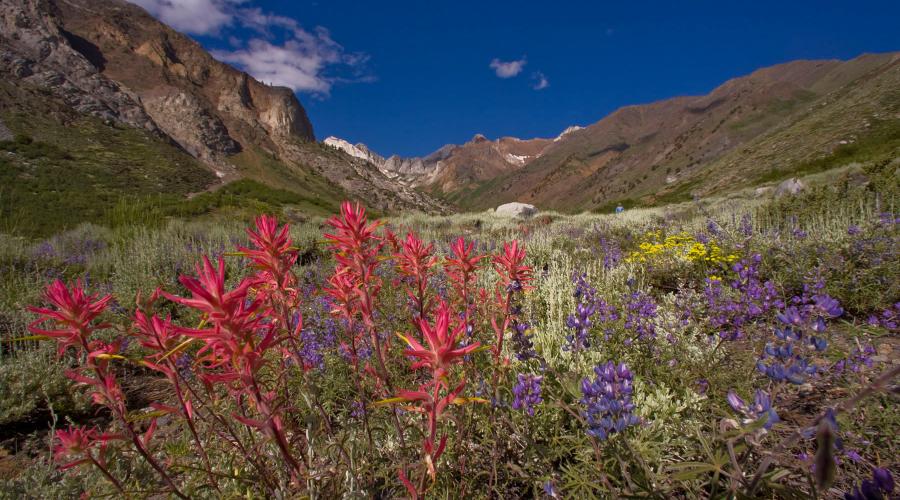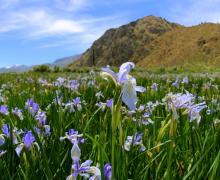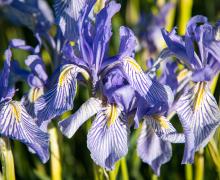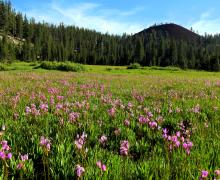Snow and rain set the stage for magnificent waterfalls and vibrant wildflowers throughout the Eastern Sierra. In Mono County, waterfalls typically surge in early spring, which is usually when the wildflower season is just getting started (flowers tend to peak mid to late summer). If the timing is right, though, you can catch the two seasonal spectacles in one trip!
Stay tuned to our Facebook, Instagram, and/or Twitter feeds for up-to-date information!
Waterfalls
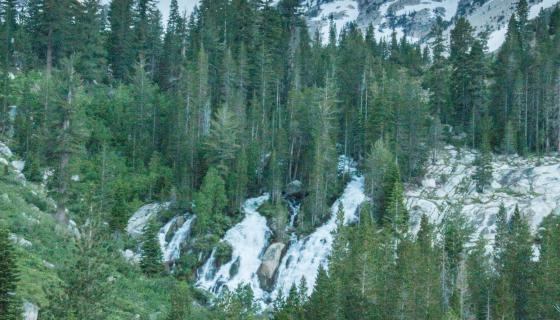
Horse Creek Trail
Bridgeport area
The Horse Creek Trail is a four-mile hike at the west end of Twin Lakes near Bridgeport. The trailhead is located at Mono Village Resort and meanders by the popular Horsetail Falls, and includes views of the Sawtooth Ridge, beautiful aspen groves that change colors in the fall, and expansive patches of Indian paintbrush and yarrow flowers in spring and summer.


Lundy Canyon Trail
Lee Vining area
Waterfalls, wildflowers, fall colors and more! The Lundy Canyon trail, just north of Lee Vining, hosts an abundance of spring beauty, with meadows swathed in columbines and yellow wallflowers, as well as a spectacular show of colors in the fall. The trail is also touted as showcasing at least three sets of waterfalls, along with some picturesque beaver ponds. The moderate hike begins from a grove of aspens and follows Mill Creek, passing by the 70-foot Lundy Canyon Falls, as well as a myriad of other cascading streams and waterways, eventually reaching the final waterfall that cascades down from Lake Helen and the Twenty Lakes Basin trail.

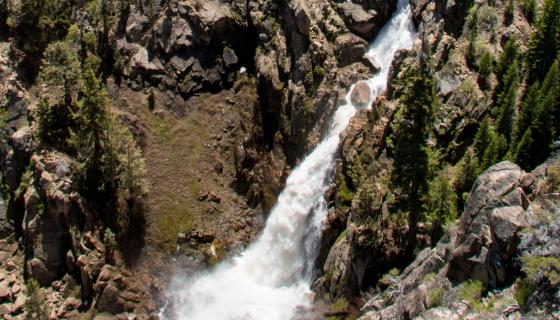
Leavitt Falls
Sonora Pass near Bridgeport
For non-hikers, the 300-foot Leavitt Falls can be viewed from a vista point on the east side of Sonora Pass (State Route 108). Located at a 7,000-foot elevation means the snowpack melts earlier than other parts of the region, making its peak display in early spring once Sonora Pass is open. Check road conditions here.


Horsetail Falls
June Lake Loop
Iconic Horsetail Falls is the largest waterfall in the June Lake Loop, rushing 270 feet from Agnew Lake to the valley floor. The best flow can usually be viewed in spring and early summer, depending on how much water is being released from the dam system above it. The Rush Creek Trail takes hikers fairly close to the waterfall, but Horsetail Falls can also be seen right from Highway 158 - “down canyon” near Silver Lake and "up canyon" near the June Mountain parking lot.

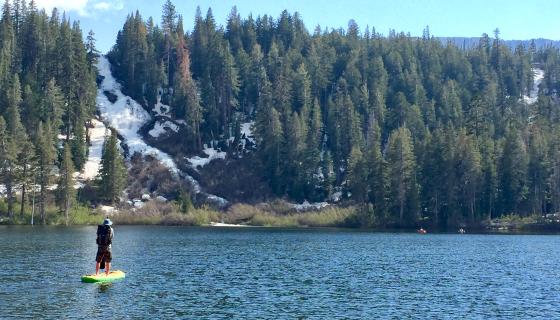
Twin Falls
Mammoth Lakes
Scenic Twin Falls in the Mammoth Lakes Basin tumbles 250 feet, year-round, from Lake Mamie to Lower Twin Lakes. The waterfall can be easily viewed from Lake Mary Road (there's a parking area right before the lake) and the two bridges that cross Twin Lakes. It can also be seen from the top at Twin Falls Overlook, off Lake Mary Road across from Lake Mamie.

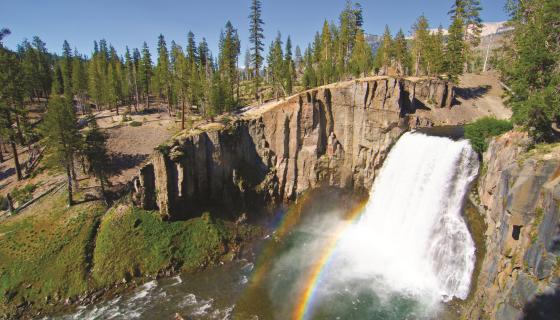
Rainbow Falls
Mammoth Lakes
Rainbow Falls is one of the most majestic waterfalls in the Mammoth Lakes area. Its location is accessible by a 1.5-mile walk from the Reds Meadow area located in the Devils Postpile National Monument area. The falls can also be reached via a 2.5-mile path from Devils Postpile. Best done in the cool, early morning hours as the trail does not provide much shade. There is a minimal fee to ride the mandatory shuttle from Mammoth’s Main Lodge parking area to the trailhead. More information on visiting Rainbow Falls and the Devils Postpile National monument here.

Wildflowers
Depending on the winter snowpack, spring showers, and elevation, wildflower season starts to explode with color throughout the Eastern Sierra as early as the end of May or early June. Typically, wildflower season is at its prime from late June through July.

Antelope Valley - Walker, Coleville, Topaz
The northern part of Mono County, right between the towns of Walker and Coleville, is a paradise for wildflower seekers - and the bloom here happens earlier than other areas of the county. Just minutes west off US 395 on Mill Canyon Road in Coleville you will find acres of wildflowers, usually during the second half of May. Also be sure to take the Golden Gate Mine Road to Little Antelope Valley Pack Station to see fields bright with wild mustard, mule ears, lupine and wild iris. Getting here: About 6.4 miles north of Walker and 6.8 miles south of Coleville, head west on Mill Canyon Road. Continue on Mill Canyon Road for several miles. Return the same way, and head west on Golden Gate Road, following signs to Little Antelope Valley Pack Station.

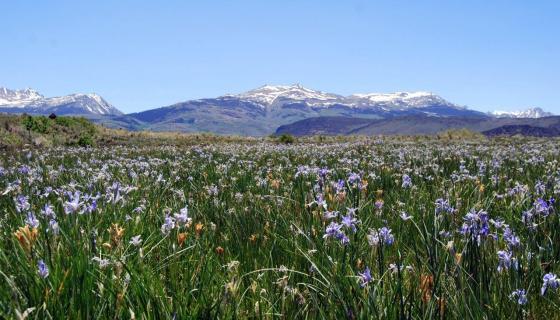
The sunny Bridgeport Valley tends to lose its snow earlier than elsewhere in the county, bringing fields of wild iris and lupine to life in mid- to late June. To the east of the valley, the Bodie Hills are slightly higher in elevation (6.000' - 9,500') and will usually blossom a bit later. Species to watch for include white and blue lupine, Anderson's larkspur, yellow hawksbeard, and Coville's phlox. Getting to the Bridgeport Valley: From US 395, south of Bridgeport, take Green Creek Road or north of Bridgeport, take Twin Lakes Road. Bodie Hills: South of Bridgeport, take the Bodie Road (SR 270) towards Bodie State Historic Park. Side roads may be rough and snow-covered; high-clearance vehicles are recommended. TIP: A visit to Bodie ghost town is not to be missed.


Just off the north end of the June Lake Loop/Hwy. 158, the Parker Bench is home to many types of wildflowers. Watch for yellow clusters of wallflower, sulphur-flower, balsamroot, sticky yellow-throats and mule ears. The hike to Parker Lake is only about 2 miles, one way, although starts off with steep switchbacks. The views of Mono Lake in the distance are worth the climb and once the trail levels out, it is an easy jaunt to Parker Lake which is framed by dramatic peaks. Getting here: From US 395, take the June Lake Loop/Hwy. 158, watching for Parker Lake Road at the north end of the Loop. Parker Lake Road is a wide dirt road -- follow it a few miles to the trailhead parking.

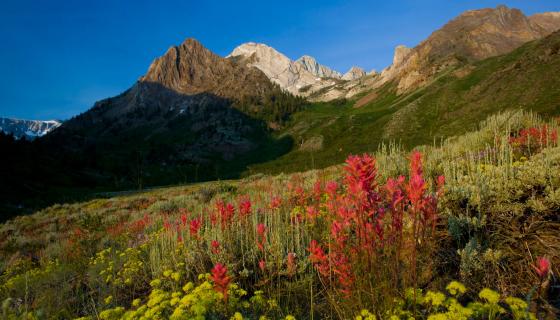
Just north of Crowley Lake, this dramatic canyon is a sure bet for wildflowers once the snow melts through July. Interspersed among sagebrush, you'll find paintbrush, lupines, milk-vetches, hawksbeard, desert peach, scarlet gilia, and meadows drenched with bright yellow mule ears. One of the most photogenic hikes in the region, another option is to see it all on horseback with McGee Creek Pack Station. Getting here: From US 395, south of Mammoth Lakes, take the McGee Creek exit. Follow McGee Creek Road for 5 miles to the trailhead.

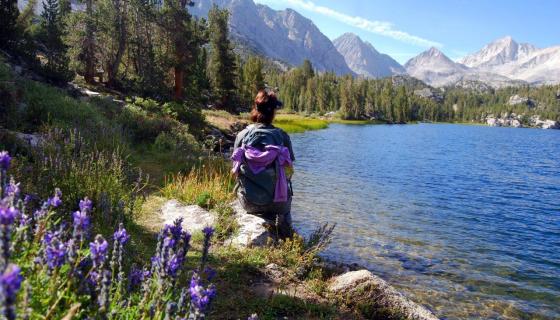
Rock Creek Road, newly resurfaced, winds up from US 395 at Tom's Place for about 11 miles to the base of majestic mountain peaks. The significant gain in elevation (7,000' - 10,200') provide the opportunity to see a wide variety of flowers in a short distance. Species to watch for include fireweed, Sierra rein-orchid, and Kelley' tiger lilies. For hikers, the Little Lakes Valley trail, at the end of Rock Creek Road, is one of the most scenic and relatively gentle hikes in the Eastern Sierra, revealing subalpine flowers such as purple lupine, paint brush, crimson columbine and bull elephant's head -- usually mid- to late July, after the winter snow has melted. Getting here: From US 395 between Bishop and Mammoth Lakes, exit at Tom's Place and take Rock Creek Road.

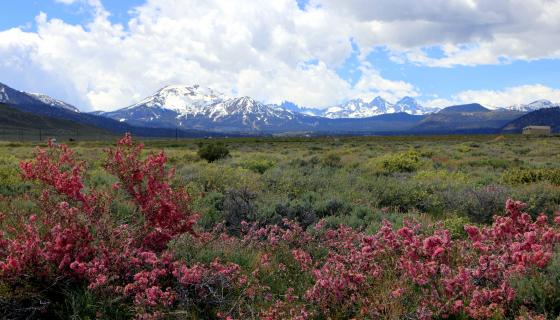
The Wildflower Hot Spots of the Eastern Sierra guide is an excellent resource to arm yourself with as you scout for flowers. It is available for a small donation (about $2) at visitor centers and ranger stations in Mono County.


Pictured above: Wild Iris in Walker
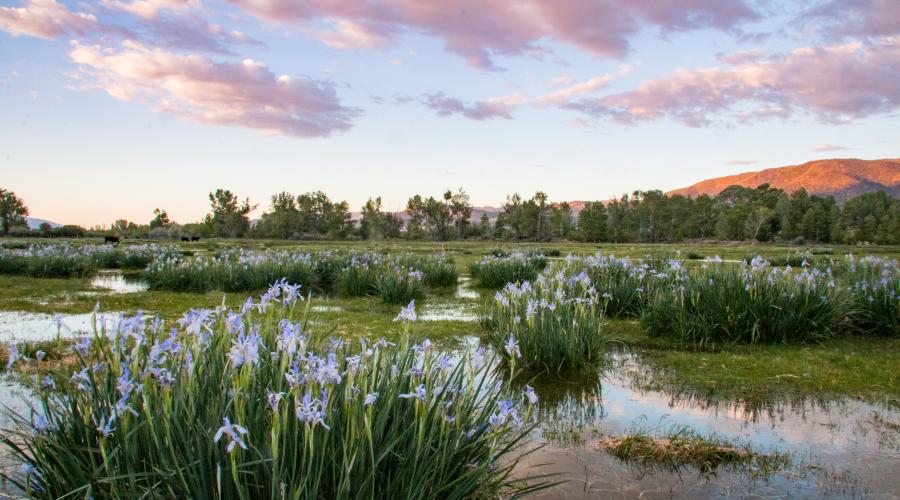
Pictured above: Wild Iris in Coleville

Pictured above: Wild Iris in Coleville
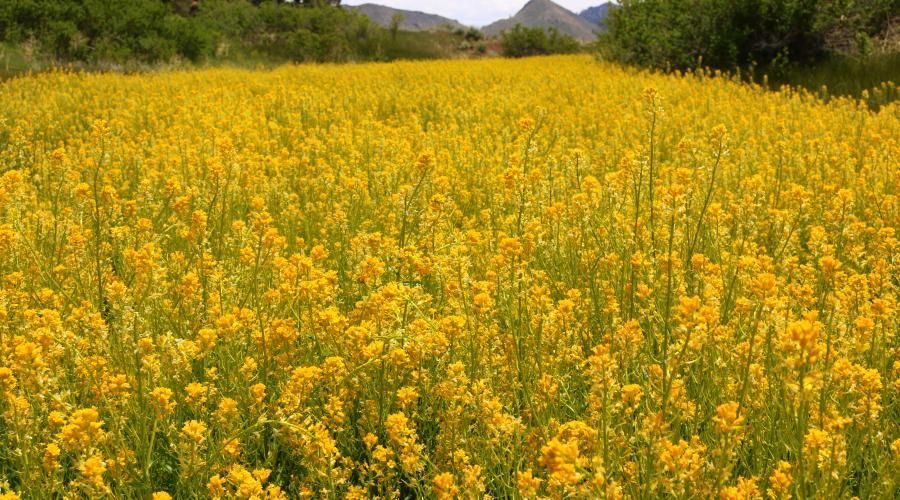
Pictured above: Wild Mustard
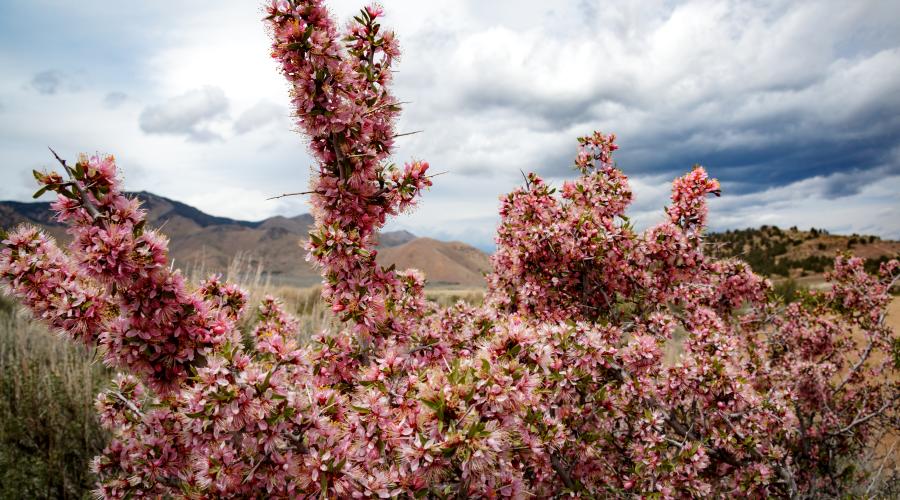
Pictured above: Desert Peach in the Antelope Valley
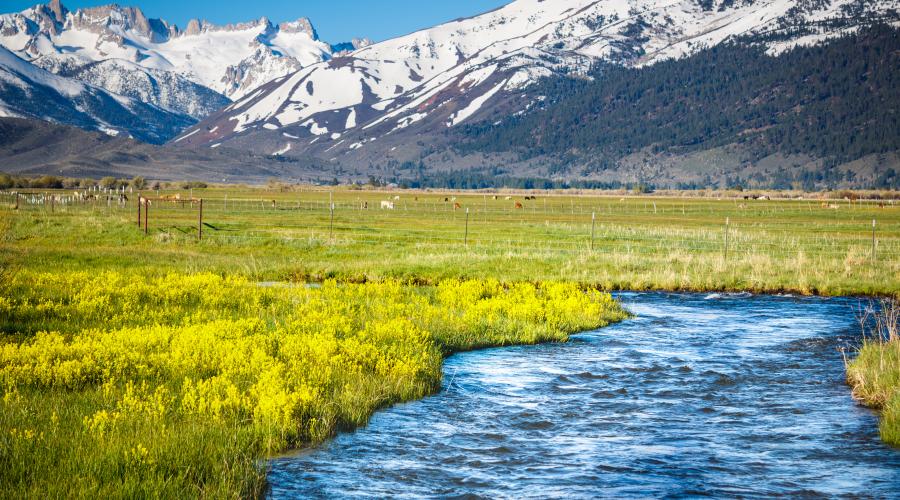
Pictured above: Bridgeport Valley

Pictured above: Sherwin Grade
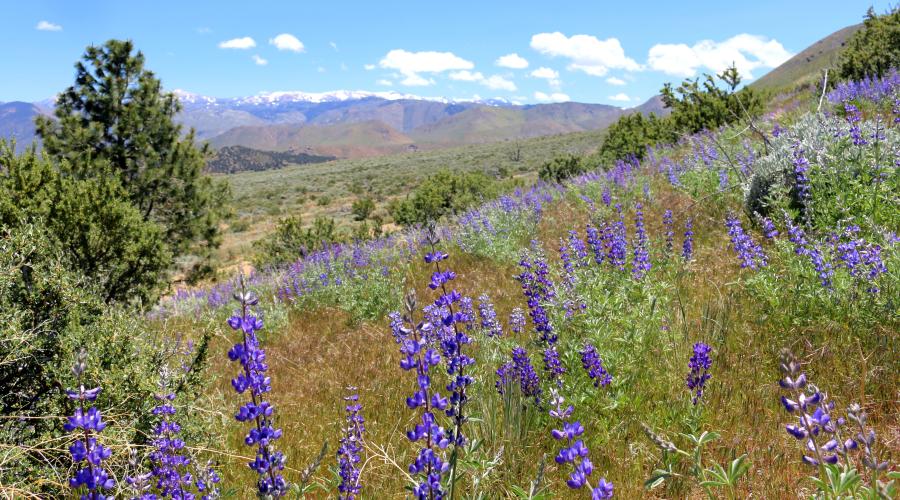
Pictured above: Lupin along Golden Gate Mine Road
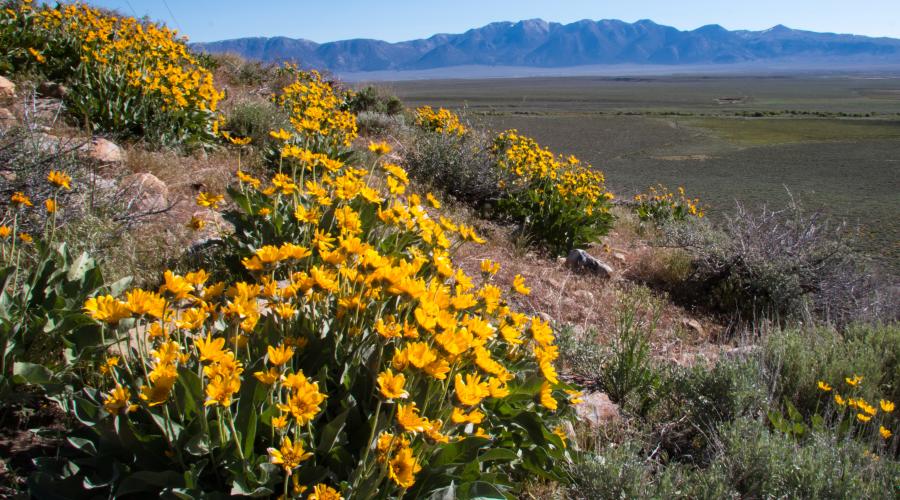
Pictured above: Mule Ears along McGee Creek Trail
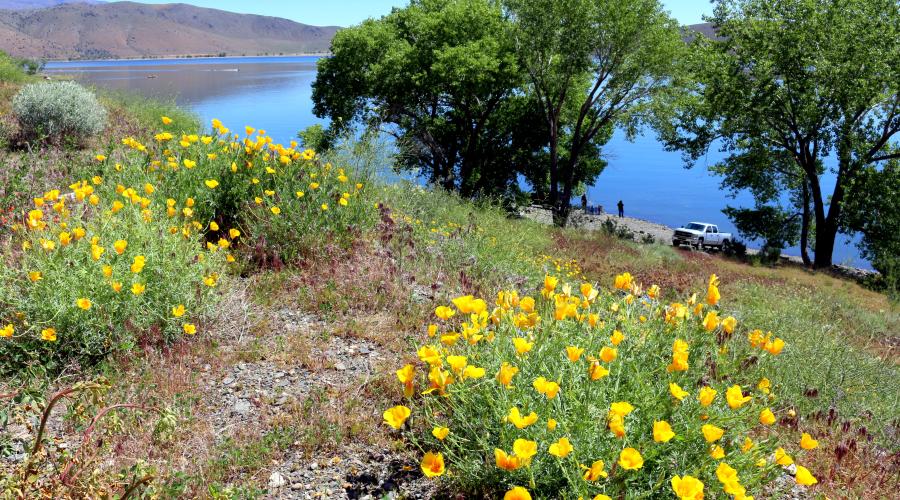
Pictured above: Poppies at Topaz Lake

Pictured above: Wildflowers near Mammoth Lakes
